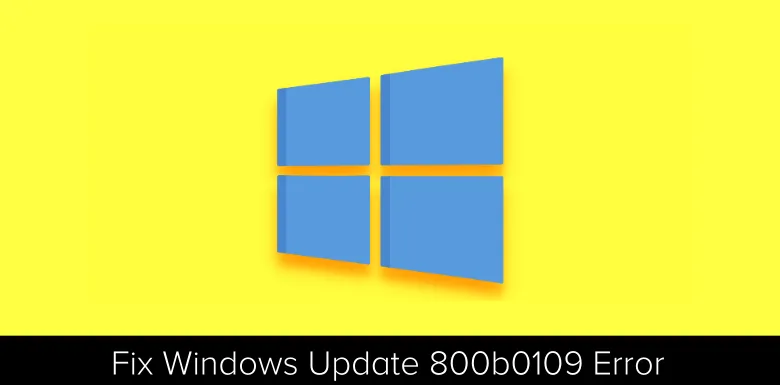In this guide, we will show you how to block websites on the Edge Browser both using an extension and the host file. So, if this is something that you’re interested in then go ahead and read the guide till the very end.
With the recent adaption to the Chromium engine, Microsoft Edge has become one of the main contenders of Google Chrome. Now it is faster, safer, and comes with features and functionalities of Chrome with some significantly better RAM management.
Although Microsoft Edge keeps getting better with each update, it does not have any built-in website-blocking feature yet. However, if you are interested in learning how to block a particular website on the Edge browser, then you are in the right place. In this article, we will see two simple methods to block a website on Edge.
How to Block a Website on Microsoft Edge?
The internet is like an open ocean. It has everything – from good to bad, bad to evil, and giving something like this blatantly to your child, is not a good idea. If you are a parent and want to restrict disturbing websites on your child’s device or if you’re trying to prevent yourself from opening some sites then this walkaround will help you out.
We’ve listed two possible methods to block a website on the Microsoft Edge browser. You can either block a website directly via browser with the help of an extension or you can block the website using a host file.
Method 1: Block websites on Microsoft Edge using Extensions
Since Microsoft Edge is now built on Chromium, it supports all extensions and add-ons available on the Microsoft Edge store and Chrome store. Therefore, to block a site on Edge, we will take advantage of extensions. To block a website by extensions, use these simple steps:
Step 1: Open Microsoft Edge on your computer.
Step 2: Then click on the three dots from the top right corner of the browser or you can use the shortcut Alt + F to open the settings menu.
Step 3: Inside the settings menu, look for the Extension option and click on that. Or type edge://extensions/ on the search bar to directly go there.

Step 4: Click on the Get Extensions for Microsoft Edge button. Or visit Microsoft Edge Add-ons to visit the store page.

Step 5: Search for the ‘Block Sites‘ extension. You’ll see several extensions promising to block websites on Edge.

Step 6: To install an extension, first, click on the Get button. Then click on the Add Extension from the pop-up window to confirm the installation.

> Note: You can directly go to the download page and get this extension.
Now the extension should be installed and added to the browser. Hence, it is time to block a website with the help of this extension. Go to the website that you want to block on Edge.
Pro Tips: While getting any extensions or add-ons if you get confused by the large number of extensions available, first try the extension which has a higher review and rating. Chances are, the more ratings the extension got, the more reliable it would be. And if one extension doesn’t work properly then try another one with second higher ratings and so on.
Step 7: Click on the extension icon from the top bar. And then tap on the ‘Block Current Site’ option within the extension. That’s it! From now on, that particular website will be blocked and not open on the Edge browser. To block more sites, go to another site and repeat the same process.


If you want to remove any sites from the block list. Tap on the extension and then click on the top-right gear icon saying manage sites. From there you can see the number of sites in your Block Sites list. To remove a site from the list click on the cross icon next to the blocked sites.
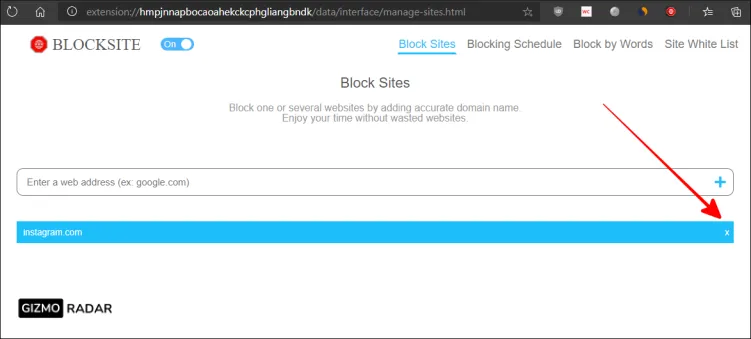
Method 2: Block Website Using Host File
Blocking websites using an extension is easy and anyone with almost no technical knowledge can do this easily. However, unblocking a blocked site is also very easy with the extension method.
That’s why if you’re looking for something systemwide which requires no extension or any browser tweaks involved then this method is for you. In this process, we have to find and edit the host file of our computer and put the website(s) name in it. Here is how you can do it.
Step 1: Go to C:\Windows\System32\Drivers\etc
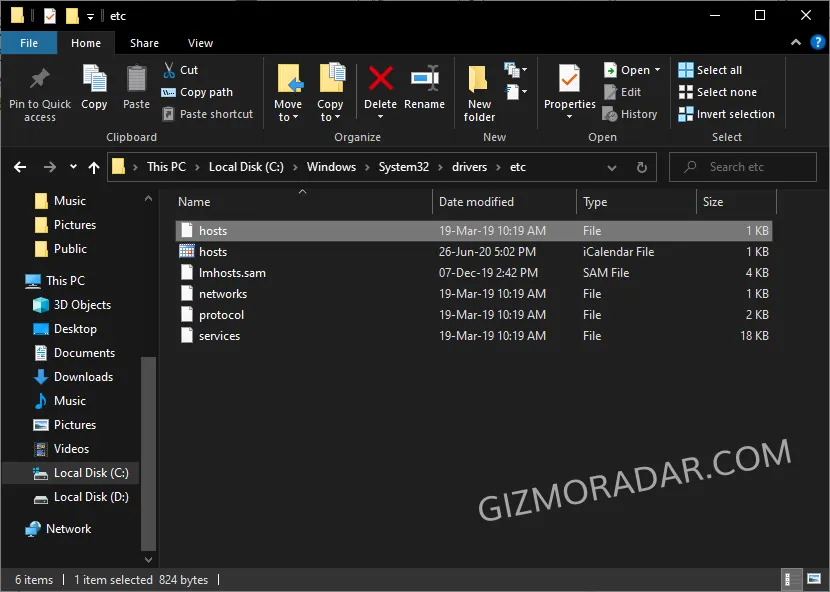
Step 2: Inside the etc folder, find and select the host file.
Step 3: Right-click on the file and open it with Notepad.
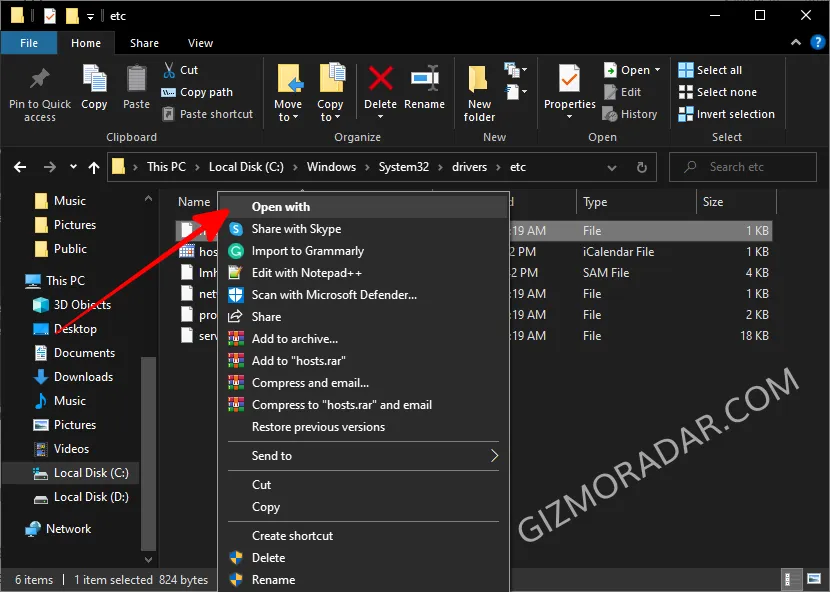
Step 4: Now at the bottom of the file add 127.0.0.1
Step 5: Press the space bar once to give a space and type the website name beside the following code. For example, here in this tutorial, I am blocking www.instagram.com, so my line of text should read like this: 127.0.0.1 www.instagram.com.

You can block as many websites as you want to, there is no such limit. You have to just type the sequence 127.0.0.1 followed by the website’s address, then press Enter to go to the next row and type a new sequence.
Step 6: When you are done adding websites to the host file. Open ‘File’ from the notepad menu bar and hit on ‘Save’ to keep the file or you can use Ctrl+S to do the job. Close the Notepad.
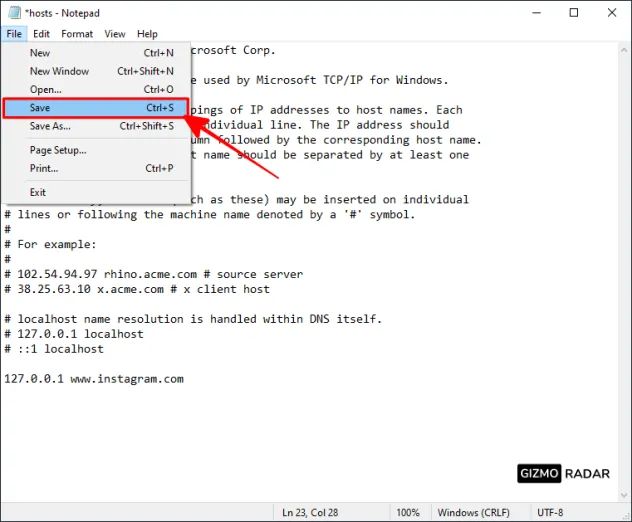
That’s all! The website (s) that you put in the host file, will be blocked and can’t be reached. And to remove a site from the blocked list, follow steps 1 to 3 then select and remove the line of code, related to the website(s) that you want to unblock. Now repeat Step 6. Now, The website(s) will be unblocked again.
Conclusion
So these were the possible two simple ways to block a website on the Microsoft Edge browser. The first method with extension is relatively easy compared to editing the host file. But let me tell you, the extension method only works with the Edge browser and is also easy to bypass.
On the other hand, the host file editing methods work with all browsers, and people who don’t have much technical knowledge can’t bypass this. Lastly, if you have any problems regarding the same, please feel free to let us know in the comment section below.



